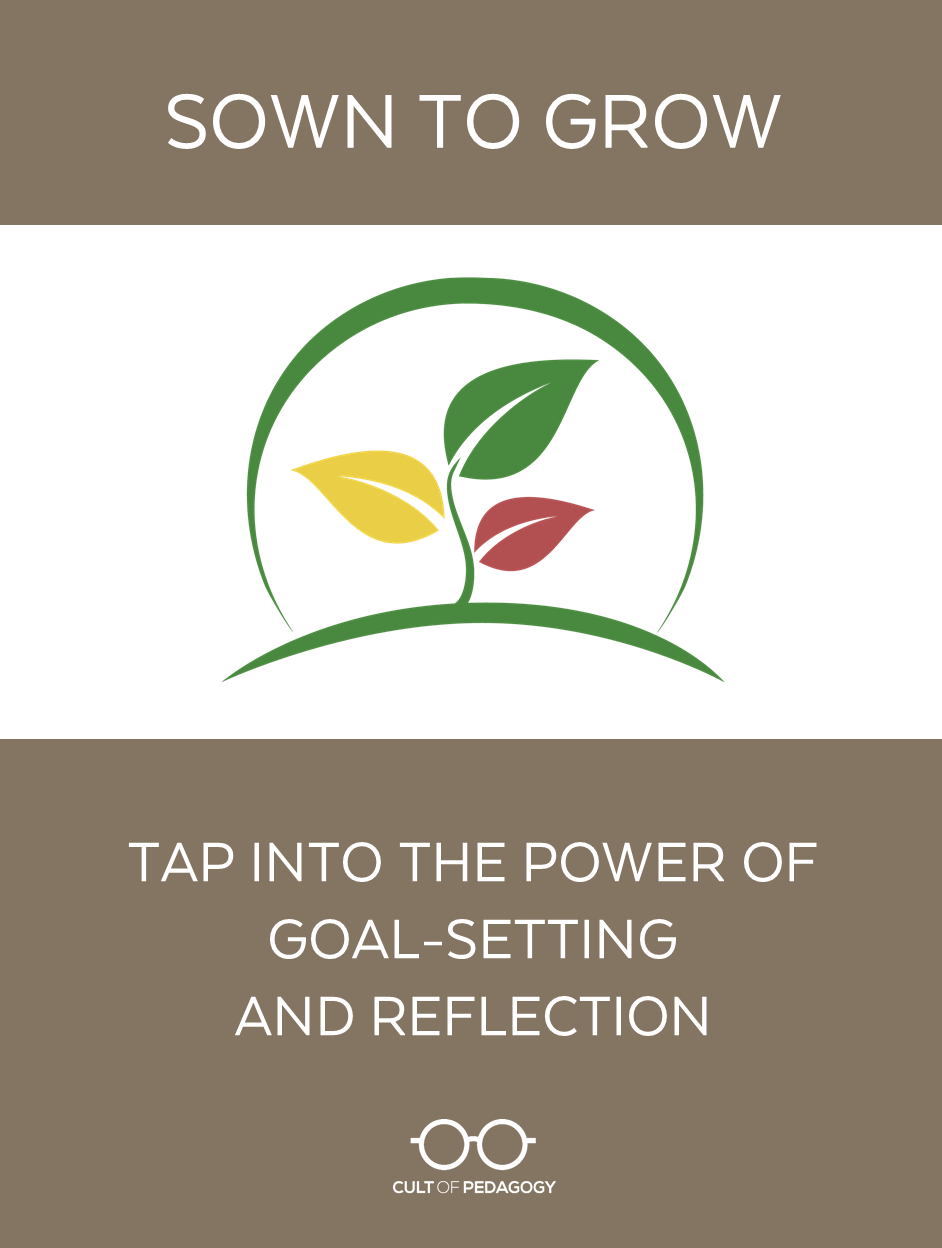
This is a sponsored post. All opinions are my own.
By now, most teachers know that one of the best things we can do for our students is to help them develop a growth mindset, the belief that they can get smarter through effort. But many teachers are at a loss for what exactly they should do to promote this mindset.
One important approach is to teach students how their brains work. If they understand that the brain is “plastic,” that it can grow and stretch if we work at it, they will be more apt to stick with difficult tasks. It’s also vital that teachers learn to give appropriate praise, to stop telling students how smart they are and start praising them for things like effort, tenacity, and strategy.
With those practices in place, the next step a teacher can take is to create structures that allow students to see their growth in action. Setting, tracking, and reflecting on goals is one of the best ways to do this. Many teachers try to manage student goal tracking on paper, but the process can be messy and time-consuming.
With Sown to Grow, a new student goal-setting and reflection tool, students can now set and track their goals digitally, and teachers can coach and support them from the sidelines. Over time, students who use Sown to Grow feel more empowered, have a stronger growth mindset, and demonstrate better academic habits. (See this white paper to read about Sown to Grow’s impact in one school district.)
How it Works
Step 1: Creating the Learning Cycle
Teachers start the process by creating a learning cycle. This is usually a short period of time during which certain learning objectives should be met. For each cycle, the teacher assigns activities that either get a numerical score or are just done for completion.
Step 2: Checking In
After the learning cycle has been created, students enter the platform. They see the cycle’s objectives and are asked how they feel about the upcoming learning cycle.
Step 3: Goal Setting
Next, students set their own goals for the learning cycle. They may decide they want to get close to mastery, meet the mastery goal, or exceed it.
Step 4: Tracking Progress
Once students have set their goals, they get to work on the tasks in that learning cycle. As they complete the assigned tasks, students record their scores, then reflect on how they did.
Step 5: Final Reflection
At the end of the cycle, students reflect on how they did on their goals and what they might want to do differently next time.
Over time, students view the results of multiple learning cycles to see their progress and determine which learning strategies worked best for them.
Meanwhile, the teacher can track progress for the whole class. One page shows student scores…
…while another shows student reflections on their goals. On this page, the teacher has the option to leave comments for individual students.
This video shows all of the above steps in action:
How Teachers are Using Sown to Grow
Grade 2
During the week, students work on non-fiction reading in RazKids and Freckle Education, both online softwares. As they do the work, they record their scores in Sown To Grow. At the end of the week, they write a reflection on strategies that are working for them and new ones they want to try.
6th Grade Math
Every day, students take a short pre-assessment on the content for the day. Based on their performance, they complete different parts of the “playlist” that is loaded into Sown To Grow. These paths are completed either in a small group with the teacher, in a peer-collaborative group with students at the same level, or independently. At the end of the day’s work, students take a post-assessment on the skill and reflect on what they will do the same or differently next time.
A Secondary Advisory Class
Every Wednesday, students log in to their online gradebook and look up their grades in all of their other classes. They enter their grades into Sown To Grow, and write reflections on what strategies are working and what new ones they want to try, then they set goals for the following week.
Why Sown to Grow Works
Student Ownership
When students track their own progress, rather than leaving it to teachers, they naturally take more ownership of their learning. And if your school has adopted student-led conferencing, you’ll find that the information collected on Sown to Grow is a great jumping-off point for students to talk about their progress.
Time for Reflection
Although many teachers know how important it is to have students reflect on their learning, reflection often gets pushed aside when we have content to cover. Sown to Grow makes reflection a regular part of a learning cycle: When students enter their own dashboards, they have a to-do list that includes checking in, setting goals, adding scores, and reflecting at the end of a cycle. As long as the teacher includes Sown to Grow time during the week, the important work of reflection will get done.
Teacher Access
Because all student goal-setting is done in a central online space, teachers can keep a close eye on student progress and reflections. And the opportunity to provide feedback to students right inside the platform allows the teacher to help students learn to reflect productively. Finally, the ability to see how the whole class is feeling at the start or end of a unit can help teachers adjust their instruction.
Other Features
Google Classroom Integration
If you work in Google Classroom, you’ll love how easy it is to create classes in Sown to Grow. With just a few clicks, you can pull classes and assignments right into the platform. Watch this video to see how it works.
Personal Goals for Students
The examples above show learning cycles made up of teacher-created activities, but teachers can also create “Personal Goal” activities, where students set and track their own goals.
Creating Habits for Life
As we move toward more self-directed, student-centered, personalized classroom models, it’s vital that our students take an active role in their own learning. To do that, they need regular practice in monitoring their own progress, evaluating which strategies are most effective for them, and reflecting on the process when it’s over. A tool like Sown to Grow offers all of those things, making your classroom a veritable greenhouse for growing lifelong learners. ♦
Join my mailing list and get a weekly email from me that will help you crush it in the classroom. As a welcome goodie bag, you’ll get access to my Members-Only Library of free downloads, which includes my e-booklet, 20 Ways to Cut Your Grading Time in Half. Come on in!

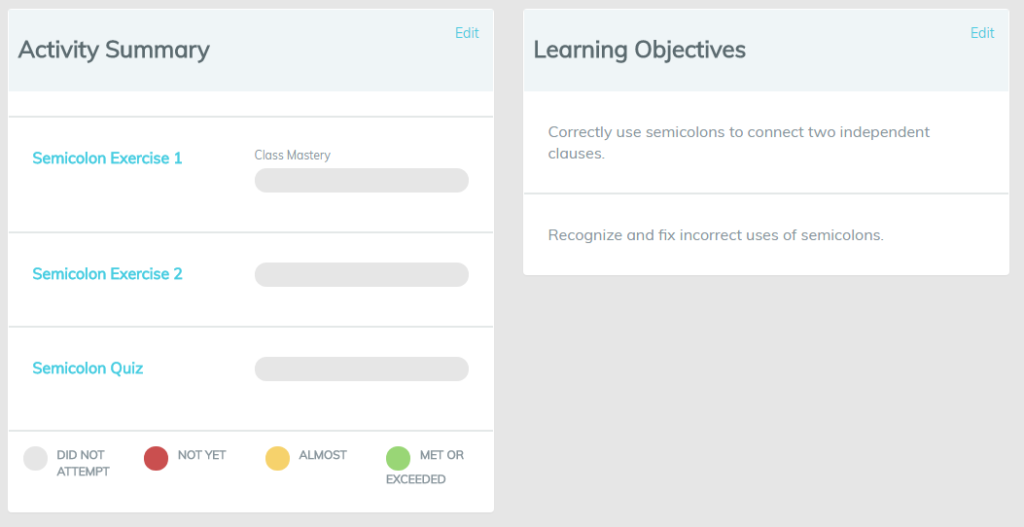
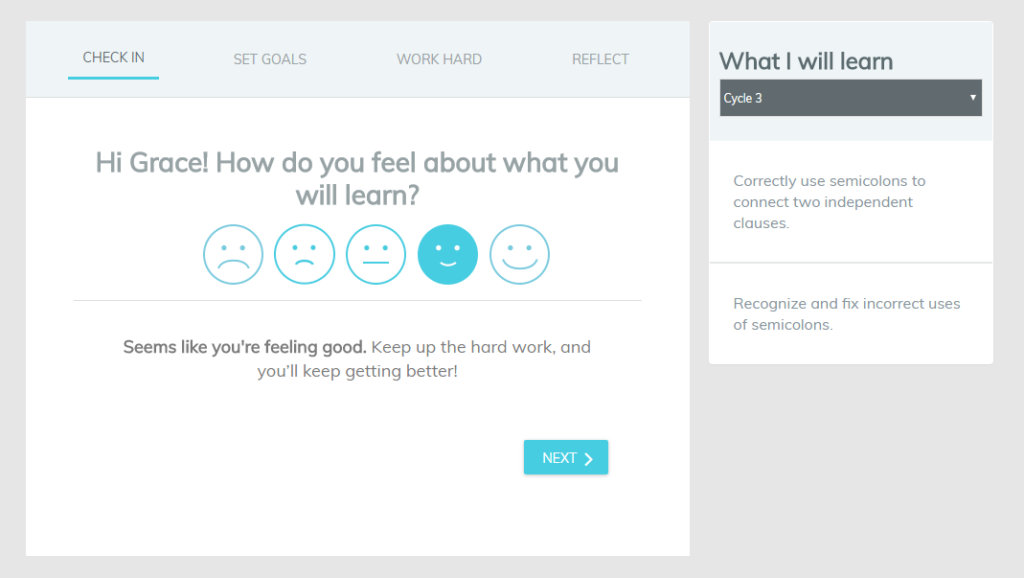
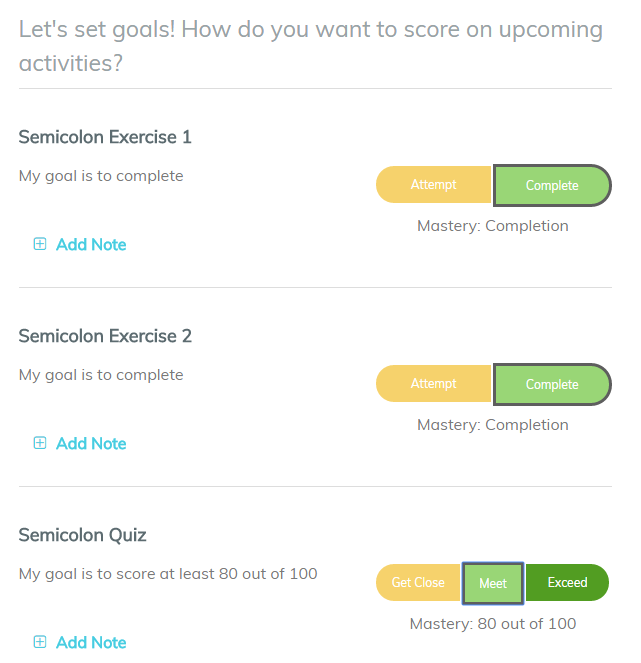
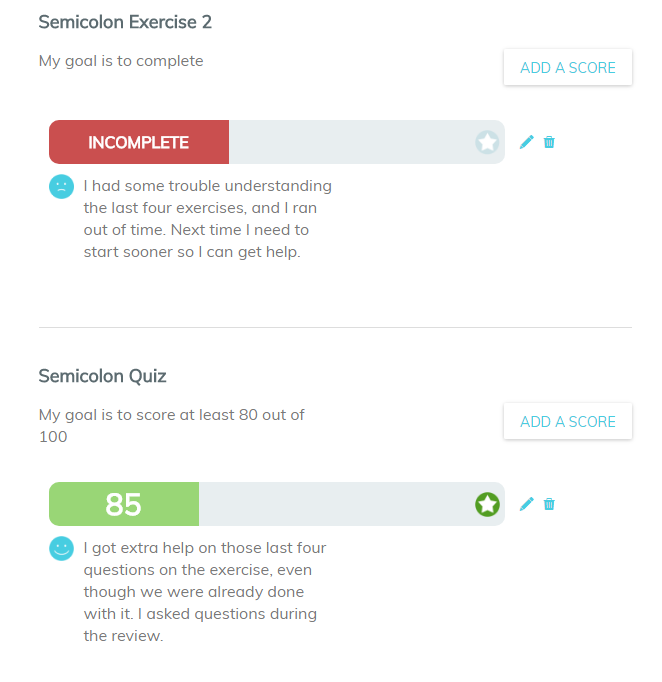
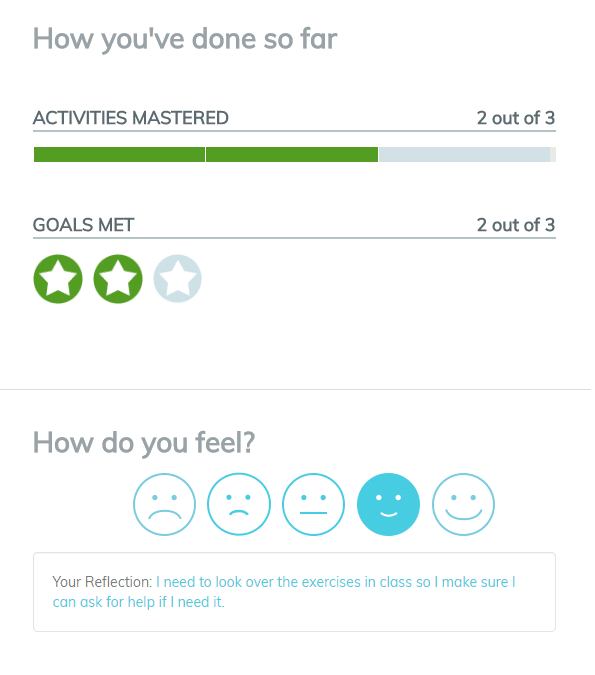
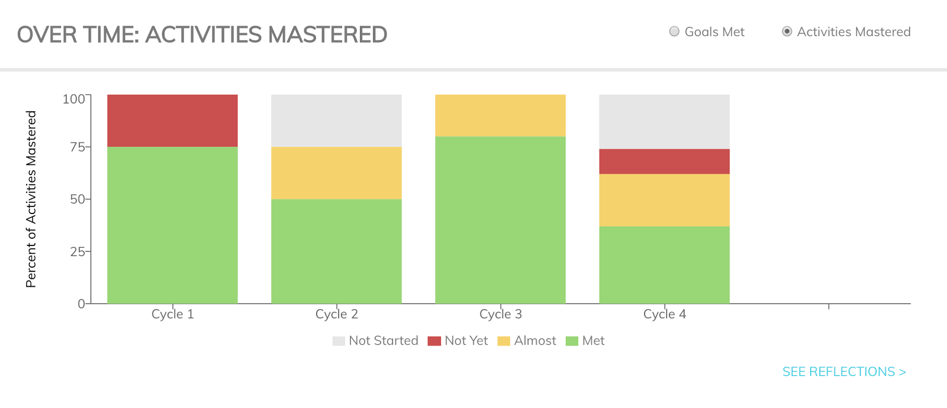
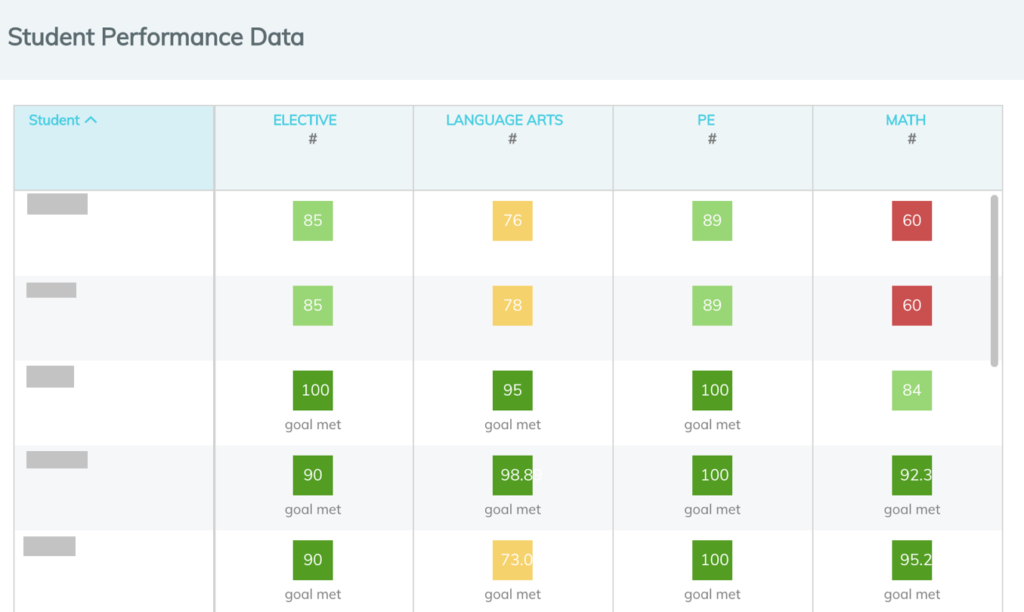
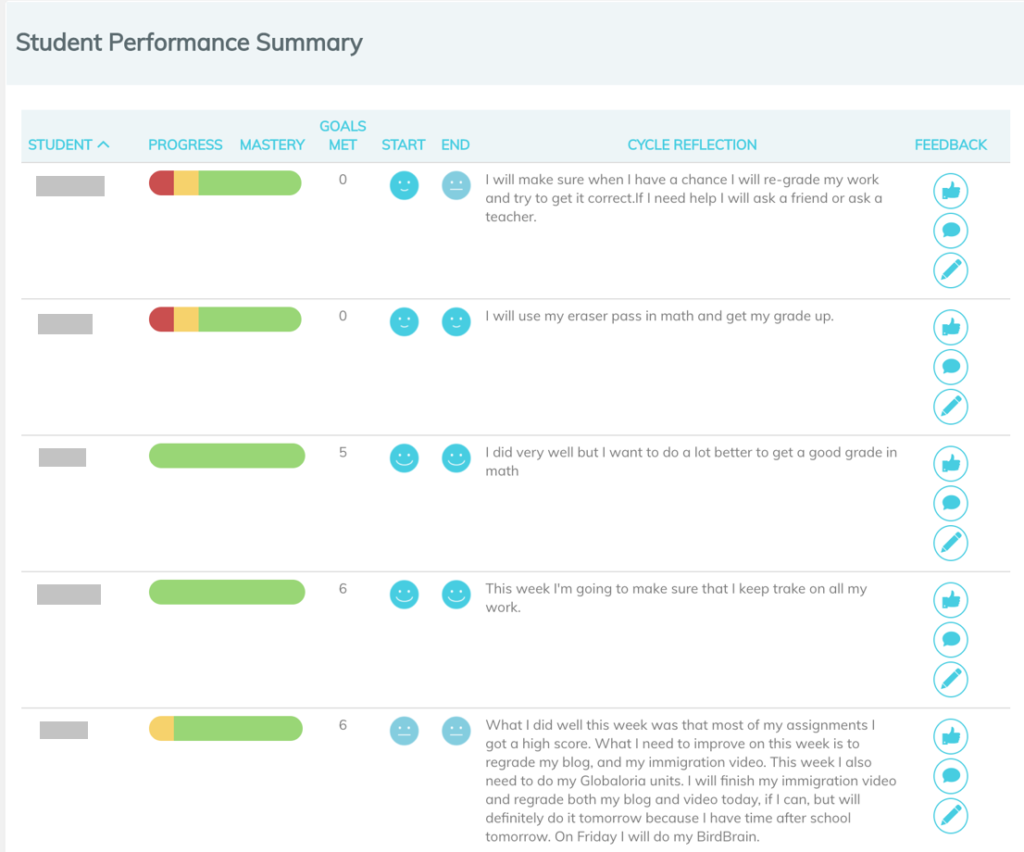
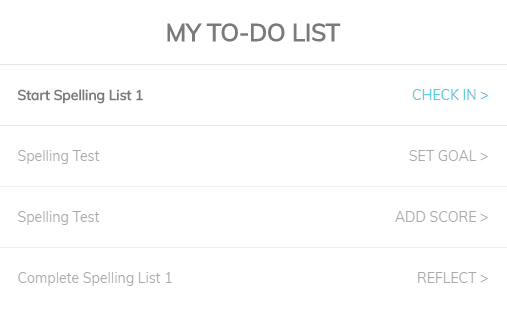

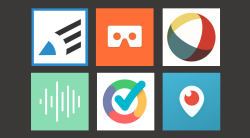


What an empowering method for setting students up for success. Thank you for sharing.
Jennifer! Thank you so much for sharing this program and writing such a great review of it! I wish I would’ve known about this sooner. I am a current National Board Candidate, and this would have been a great resource to use to help eliminate some of the paper involved with formative assessments, summative assessments, and self-reflections! But I will certainly use this next year! I wish my school was 1-to-1! It’d be so much easier to implement this product! Again, thank you for this post and sharing the resource!
So in order to use this you need computer access daily? I can get computer access once a week, maybe twice. Would this still work for my classes?
Hi Nina – this is Rupa, one of the founders of Sown To Grow. You can definitely use the platform without daily use of computers! We see a lot of great models where students set goals and reflect weekly. I’m more than happy to connect and share examples, if that would be helpful. You can email me at rupa@sowntogrow.com 🙂
Thank you for providing information about this tool. I have struggled to collect and share data in a user friendly manner that is also easily accessible to both students and parents. I do a lot of goal-setting with my students, but, as you mentioned, the reflection aspect often falls to the wayside. Reflection is too important to allow that to happen. This tool encompasses the data collection/sharing, goal-setting and reflection components that encourage student investment and empowerment. I absolutely plan to use Sown to Grow this upcoming school year! I really appreciate you sharing!
This appears to be a great platform to utilize for middle school students.
This procedure is a user-friendly way to empower kids.
Loved the article. I’m often drenched in papers and sweat combination. Your concepts are well worth a try.